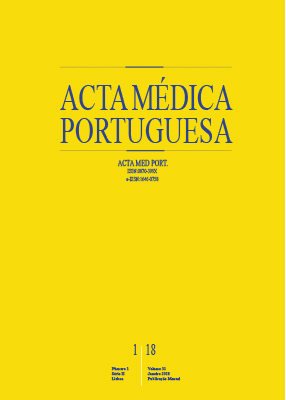Radiofrequency for Treatment of Refractory Epistaxis in Hereditary Hemorrhagic Telangiectasia
DOI:
https://doi.org/10.20344/amp.8802Keywords:
Epistaxis, Radiofrequency, Telangiectasia, Hereditary HemorrhagicAbstract
Hereditary hemorrhagic telangiectasia is a rare multi-systemic autosomal dominant disorder characterized by dysplasia of the vascular connective tissue and recurrent bleeding tendency. Epistaxis is the most common and earliest symptom. It is usually mild to moderate, however, in some patients it can be severe with significant interference in quality of life. We report a case of a patient with hereditary hemorrhagic telangiectasia, in which an episode of refractory epistaxis was treated with radiofrequency and fibrin sealant. Control of acute bleeding and elimination of telangiectasia was possible with this technique. After six months follow-up, there was no epistaxis recurrence. Various treatments for epistaxis in this disease have been described in the literature, but there is no consensus about the gold-standard procedure. Radiofrequency ablation of telangiectasia is a recent technique that has shown to be safe, effective and well tolerated, even in patients who underwent other previous treatments.
Downloads
Downloads
Published
How to Cite
Issue
Section
License
Copyright (c) 2018 Acta Médica Portuguesa

This work is licensed under a Creative Commons Attribution-NonCommercial 4.0 International License.
All the articles published in the AMP are open access and comply with the requirements of funding agencies or academic institutions. The AMP is governed by the terms of the Creative Commons ‘Attribution – Non-Commercial Use - (CC-BY-NC)’ license, regarding the use by third parties.
It is the author’s responsibility to obtain approval for the reproduction of figures, tables, etc. from other publications.
Upon acceptance of an article for publication, the authors will be asked to complete the ICMJE “Copyright Liability and Copyright Sharing Statement “(http://www.actamedicaportuguesa.com/info/AMP-NormasPublicacao.pdf) and the “Declaration of Potential Conflicts of Interest” (http:// www.icmje.org/conflicts-of-interest). An e-mail will be sent to the corresponding author to acknowledge receipt of the manuscript.
After publication, the authors are authorised to make their articles available in repositories of their institutions of origin, as long as they always mention where they were published and according to the Creative Commons license.









